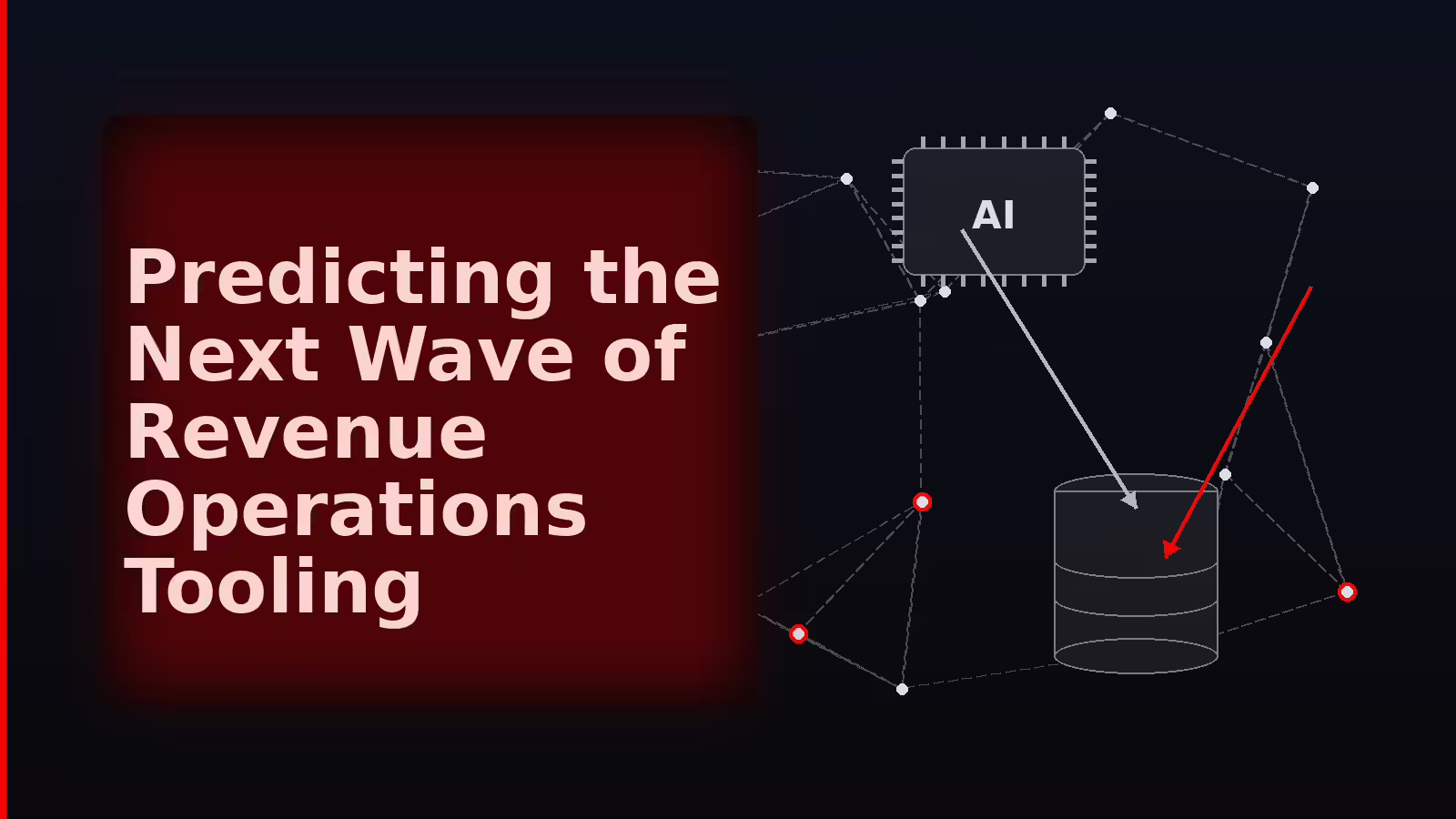Why Today’s Advanced Tech Stacks Create Friction
The discipline of Revenue Operations (RevOps) was born from a simple, powerful idea: to drive predictable growth, an organization must align its people, processes, and technology across all revenue-generating functions. By breaking down the traditional silos separating marketing, sales, customer success, and finance, RevOps promised to create a single, cohesive engine for growth, optimizing the entire customer lifecycle from initial awareness to long-term retention. This strategic framework aims to enhance efficiency, foster collaboration, and deliver a seamless, unified customer experience. For years, this has been the undisputed north star for high-growth companies, with a recent Gartner prediction stating that by 2025, 75% of the world’s highest-growth companies will deploy a RevOps model. However, a fundamental paradox has emerged. In the fervent pursuit of this aligned vision, organizations have armed their teams with an ever-expanding arsenal of sophisticated, powerful, and specialized technologies. Yet, instead of achieving a state of operational harmony, many find themselves grappling with a new, more insidious form of chaos. The very tools purchased to dismantle silos have, in practice, erected new digital walls between them. This has created a significant gap between the promise of RevOps and its day-to-day reality. The evidence suggests a concerning trend: Gartner projects that by 2026, a staggering 60% of B2B organizations will fail to create a functioning end-to-end revenue process and will revert to their old functional silos. The primary reason for this failure is not a flaw in the RevOps philosophy, but the fact that companies attempted to solve the problem through organizational redesign alone, without addressing the underlying fragmentation of their processes and technology.
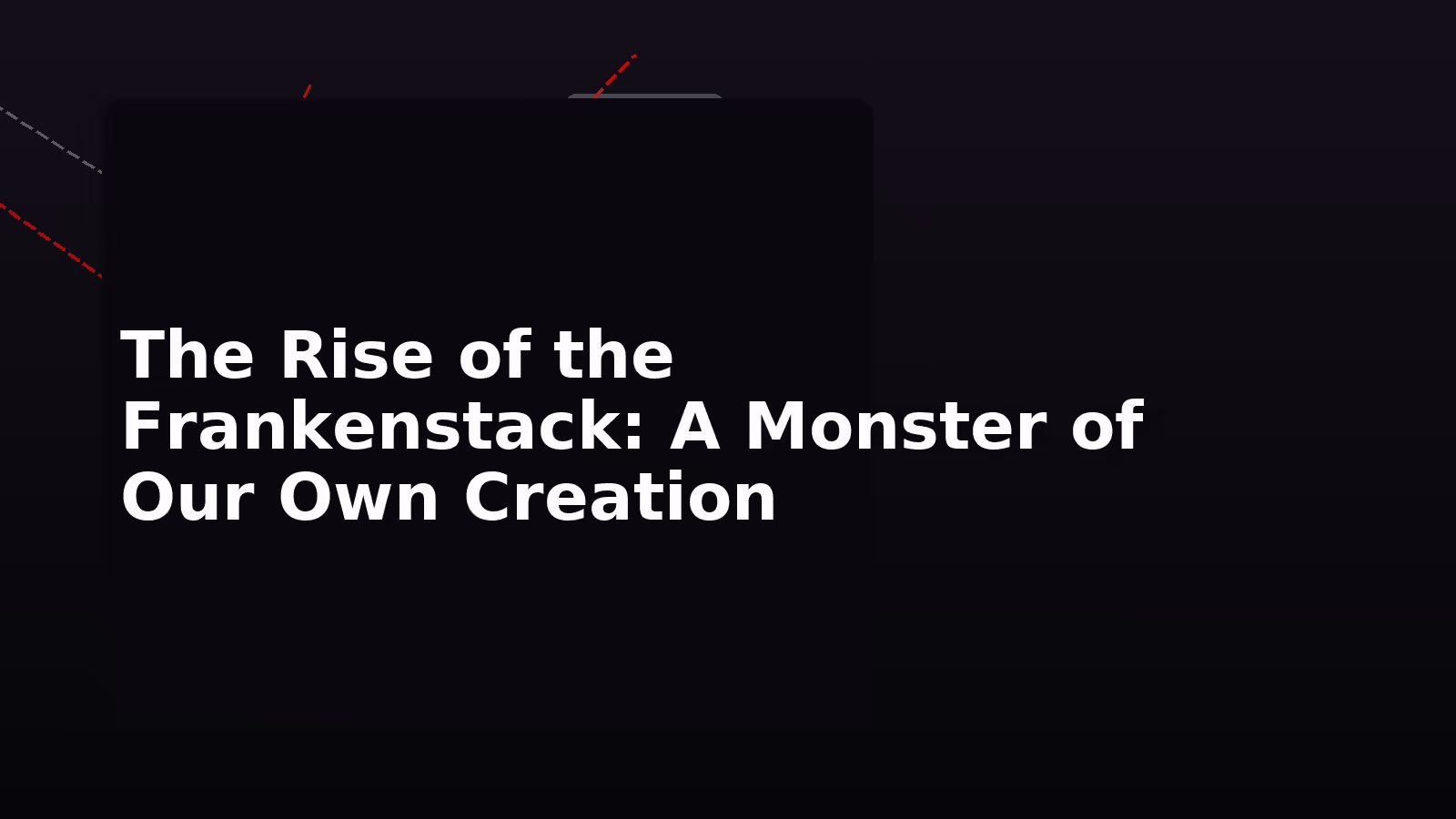
The Rise of the Frankenstack: A Monster of Our Own Creation
At the heart of this paradox lies a phenomenon known as the “Frankenstack”: a go-to-market (GTM) technology stack stitched together from numerous powerful, best-in-class, but ultimately disconnected point solutions. The proliferation of these tools has been explosive. In 2011, the marketing technology landscape consisted of approximately 150 tools; by 2020, that number had surged to over 8,000, and the growth has not slowed. Today, a typical RevOps team must manage a sprawling and complex portfolio of technologies that includes Customer Relationship Management (CRM) systems, marketing automation platforms, sales engagement tools, customer success platforms, business intelligence (BI) and analytics software, conversation intelligence, and contract management solutions, among others. While each individual tool may be excellent at its specific function, their assembly into a coherent whole is often an afterthought. This uncoordinated acquisition of technology leads to several critical dysfunctions. The most obvious is redundancy, where multiple tools are purchased to perform the same or overlapping functions, resulting in wasted resources, user confusion, and unnecessarily complex workflows. More damaging are the integration challenges. When these disparate systems cannot communicate effectively, they create a disjointed technological ecosystem where teams are forced to work in isolation, each using their own preferred set of tools. This fragmentation directly undermines the core purpose of RevOps, leading to high levels of frustration among users and significant operational disruptions that hinder productivity and data-driven decision-making.
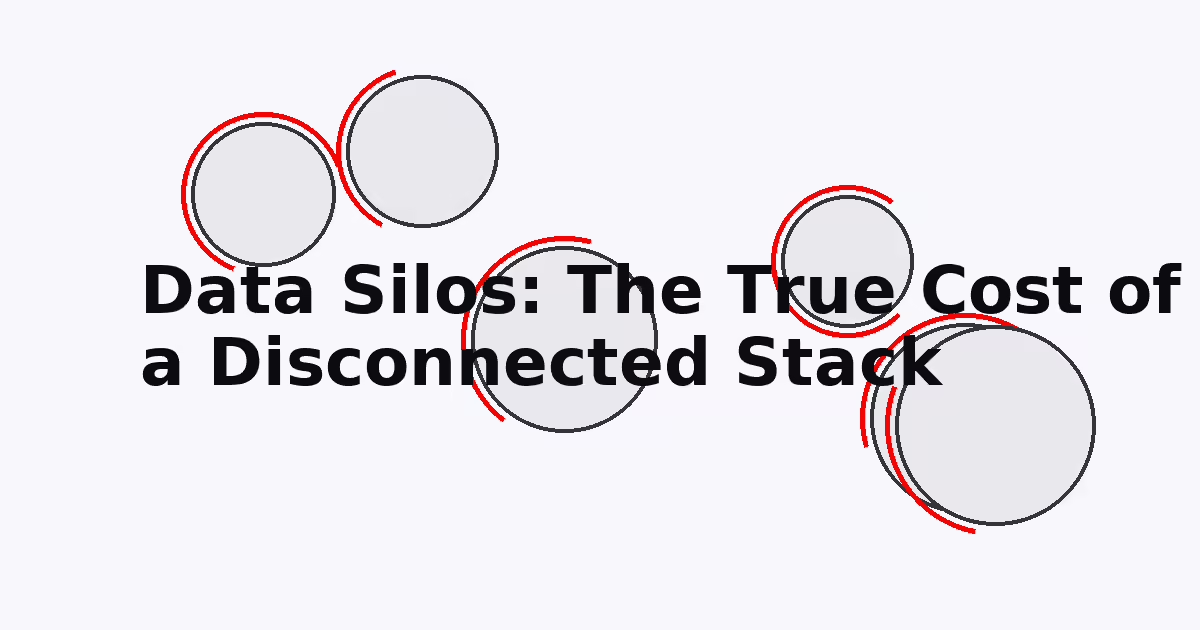
Data Silos: The True Cost of a Disconnected Stack
The most corrosive consequence of the Frankenstack is the creation of pervasive data silos-isolated repositories of information trapped within individual applications and departments. When the marketing team’s data lives in one system, the sales team’s in another, and the customer success team’s in a third, it becomes functionally impossible to establish a single, reliable source of truth for the entire organization. This data fragmentation is not a minor inconvenience; it is a critical business liability with steep and often hidden costs. As one expert has noted, the number one challenge for RevOps is simply gathering and consolidating data from different sectors of the company. The impact on the customer experience is immediate and severe. From the customer’s perspective, they are interacting with a single brand, not a collection of departments. Yet, data silos create a fractured and inconsistent journey. A customer may receive marketing promotions for a product they already own, be forced to repeat their issue to multiple support agents, or experience jarringly different messaging as they are handed off from one team to another. These disconnected interactions erode trust and lead to frustration, directly impacting customer satisfaction and retention. Operationally, the costs are just as significant. Without a unified view of customer data, teams miss critical opportunities for cross-selling and up-selling, and leads get lost during clumsy handoffs between marketing and sales. Forrester research has shown that companies with tightly aligned sales and marketing teams grow revenue 24% faster, a feat that is impossible when data is fragmented. The inability to see the full customer journey prevents teams from making informed, strategic decisions, leading to wasted resources on ineffective campaigns and a fundamental misunderstanding of what truly drives revenue.
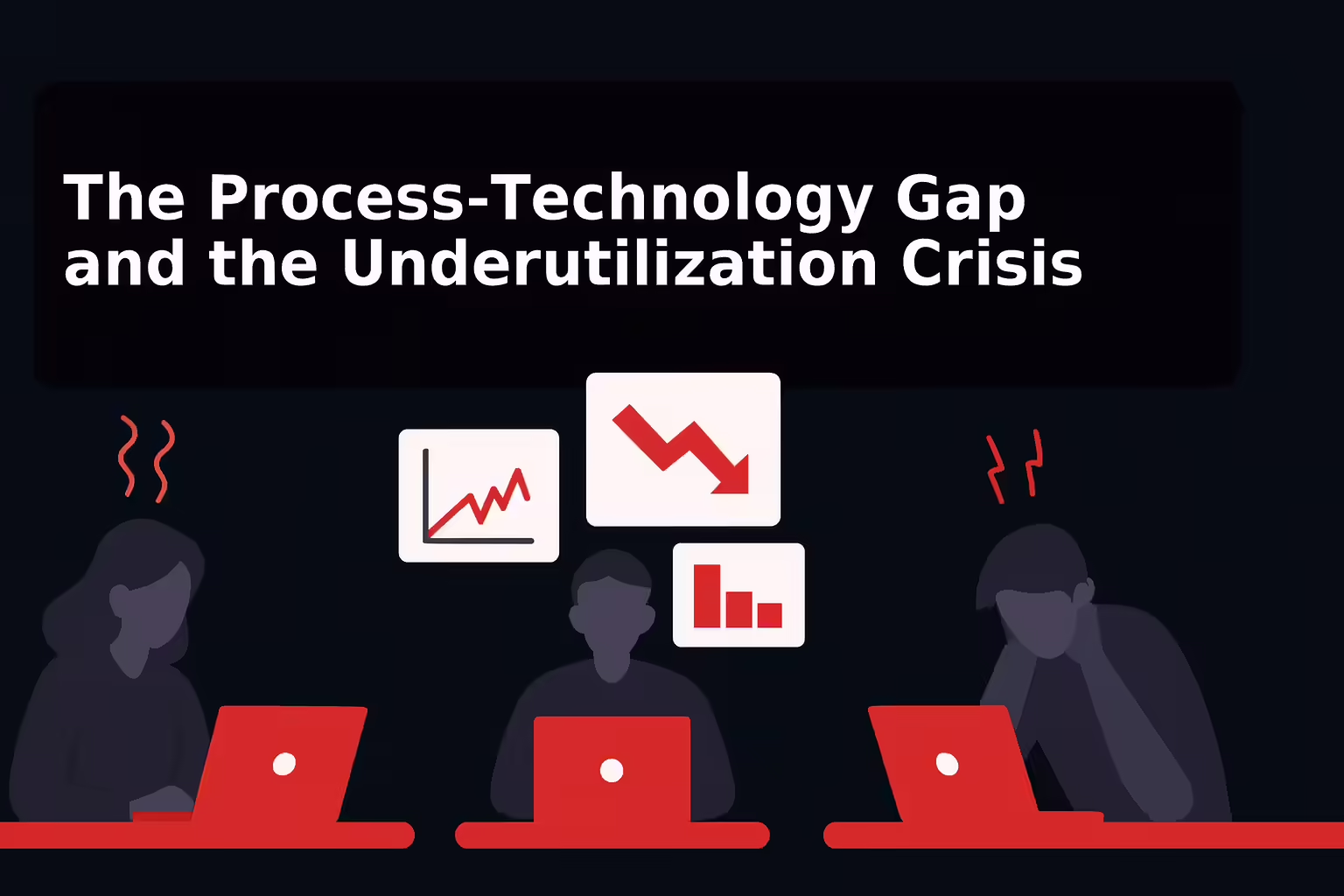
The Process-Technology Gap and the Underutilization Crisis
The rapid adoption of technology has far outpaced the evolution of the business processes meant to govern it. In many organizations, teams still rely on inefficient, manual processes-endless spreadsheets, manual data entry, and ad-hoc communication-to bridge the gaps between their sophisticated but disconnected tools. This process-technology gap has precipitated a crisis of underutilization. A recent survey revealed a shocking statistic: 95% of RevOps professionals believe their company’s tech stack is not being fully utilized. This represents a colossal waste of technology spend and a systemic failure to capture the promised return on investment from these powerful platforms. This problem is exacerbated by a lack of consistent training and governance. When team members use tools inconsistently or fail to enter complete information into the CRM, the data becomes polluted, incomplete, and inaccurate. This degradation of data quality renders a data-driven strategy useless, as decisions are made based on flawed or incomplete information. The result is a self-perpetuating cycle of inefficiency: the tools bought to enable RevOps create data fragmentation, which necessitates manual workarounds, which in turn leads to poor data quality, undermining the value of the tools themselves. This leads to a critical realization about the current state of the market. Companies are trapped in a RevOps catch-22. They invest in more specialized tools to solve problems of alignment and efficiency. However, this very proliferation of tools is what causes the data fragmentation and process complexity that prevent true alignment and efficiency. The next great leap in RevOps is widely understood to be driven by artificial intelligence, which promises to deliver predictive insights and intelligent automation. But AI is entirely dependent on vast quantities of clean, unified data to function effectively. Therefore, the current state of the typical GTM tech stack-the fragmented Frankenstack-actively prevents the adoption and success of the very technologies that could solve its most pressing problems. This fundamental tension is the primary force driving the market toward a new technological paradigm.
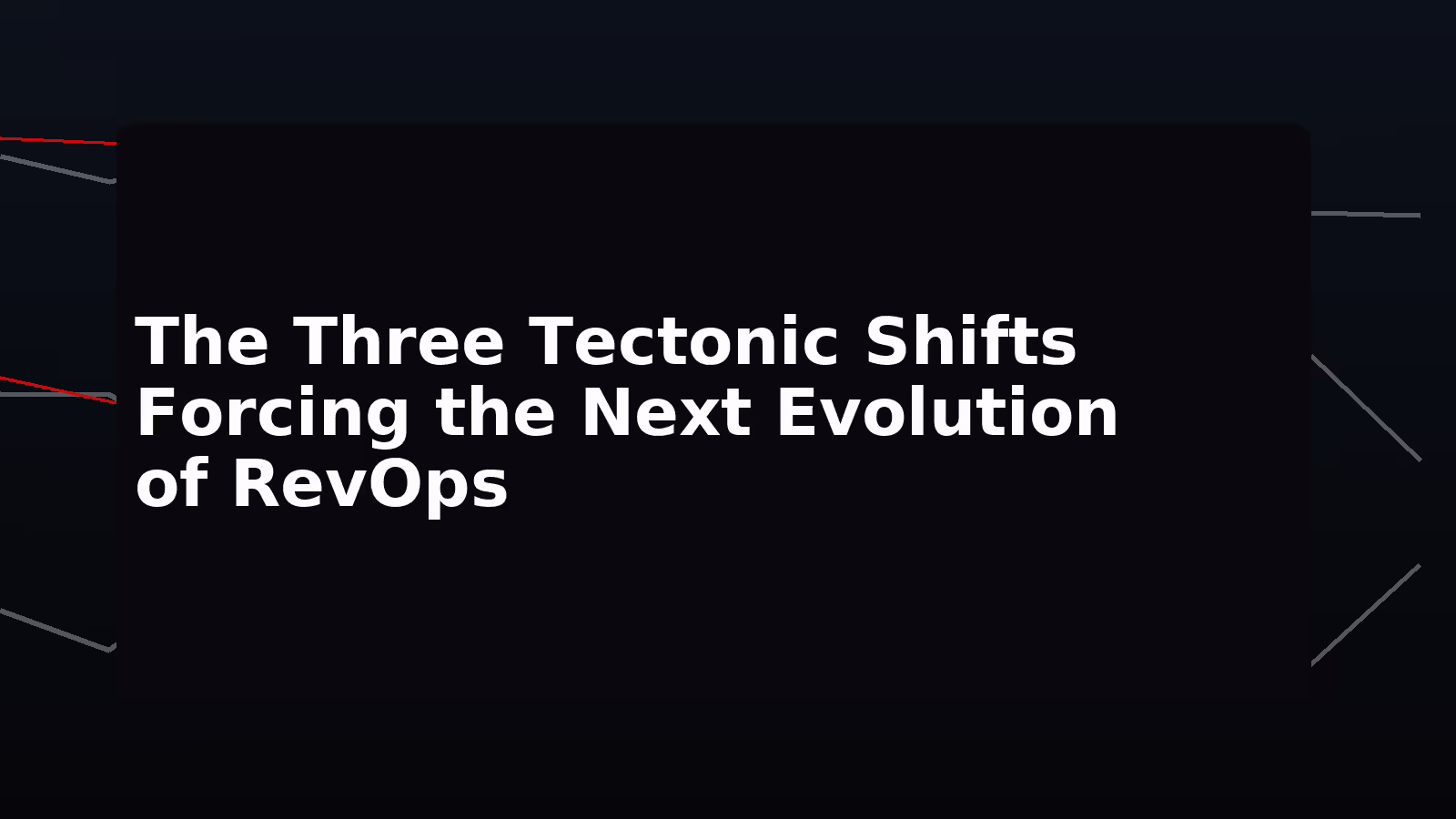
The Three Tectonic Shifts Forcing the Next Evolution of RevOps
The “Frankenstack” model is not merely inconvenient; it is becoming obsolete. Its demise is being accelerated by three fundamental, long-term market forces. These are not fleeting trends but permanent, tectonic shifts in how businesses must operate to compete and grow. Understanding these drivers is essential to predicting the next wave of RevOps tooling and strategy.
Driver 1: The Rise of the Autonomous Buyer and the Mandate for Journey-Centricity
The modern B2B buyer has seized control of the purchasing process. Decades of conditioning by consumer-grade digital experiences have reshaped their expectations. Today’s buyers are digital-first, self-sufficient, and increasingly prefer a rep-free experience. Research indicates that a remarkable 75% of B2B buyers would rather not interact with a salesperson at all, and as much as 70% of the buyer’s journey is now completed independently before a sales representative is ever contacted. This behavioral shift renders traditional, internally focused business models obsolete. This new reality forces a profound strategic reorientation. Companies can no longer afford to optimize their internal, siloed processes in isolation-for example, focusing on “the marketing funnel” or “the sales process” as separate functions. Instead, they must become obsessive about understanding and optimizing a single, unified, end-to-end customer journey. Every interaction, from an anonymous website visit to a post-purchase support ticket, must be viewed as part of one continuous experience. The implications for RevOps technology are immense. Tools can no longer be designed to serve a single department. The next generation of technology must be architected around the customer journey itself, capable of providing a consistent, contextual, and personalized experience at every touchpoint. This requires platforms that can capture, unify, and act upon signals from across the entire customer lifecycle. Underscoring this shift, Forrester has identified that a top priority for organizations in 2024 is to gain a clear line of sight into the behavior of entire buying groups, not just disconnected individual leads-a task that is impossible with the siloed data produced by a Frankenstack.
Driver 2: The Leap From Brittle Automation to Intelligent Orchestration
The second major driver is the evolution of automation itself, a leap from rigid, task-based execution to intelligent, outcome-driven coordination. This represents a move from a first generation of automation to a second, more sophisticated generation of orchestration. Generation 1.0 Automation is characterized by brittle, rule-based logic. These are the familiar “if this, then that” workflows that, while useful for automating simple, repetitive tasks, lack flexibility and require significant manual setup and constant maintenance. This first wave automates tasks within a single system, such as sending a sequence of emails or creating a task when a field is updated. Generation 2.0 Orchestration, by contrast, is the intelligent coordination of multiple systems, tools, and processes, enabling them to work together smoothly and efficiently to achieve a complex outcome. It is not about automating a single task but about automating an entire cross-functional workflow. Orchestration is event-driven, adaptive, and powered by artificial intelligence. It moves beyond simple rules to make dynamic decisions based on real-time data. The engine of this leap is AI. Generative AI and machine learning are transforming the possibilities of automation. They enable predictive analytics that can forecast customer churn, identify expansion opportunities, and calculate the likelihood of a deal closing. More importantly, they allow for dynamic workflow adjustments. Instead of following a static, pre-programmed path, an orchestrated system can analyze millions of customer interactions to determine and trigger the “next best action” for a sales rep, making decisions autonomously and adapting its strategy based on what is most likely to succeed.
Driver 3: The Centralization of Data as the Fuel for Intelligence
The first two drivers-a journey-centric approach and intelligent orchestration-are entirely dependent on this third, foundational driver: the centralization of data. A seamless customer journey cannot be managed, and an intelligent workflow cannot be orchestrated, without a clean, unified, and accessible data foundation. The Frankenstack, with its inherent data silos, is the single greatest impediment to achieving either of these goals. The market is therefore undergoing a rapid consolidation around solutions that can break down these digital walls and create a “single source of truth” or a unified data model for all revenue-related activities. Recognizing this imperative, Forrester has explicitly recommended that establishing a data center of excellence is a “must-do” strategic priority for all B2B organizations. A key technology enabling this shift is the Customer Data Platform (CDP), which is purpose-built to collect, cleanse, organize, and unify customer data from disparate sources into a single, comprehensive profile for each customer. This shift elevates data from a byproduct of operations to its most critical input. Clean, connected, and orchestrated data is the essential prerequisite for leveraging AI. Without it, predictive models will be inaccurate, and automation will fail. The 2025 State of RevOps Survey confirms this, finding that companies with poor data quality report the most significant barriers to AI adoption across every category. Taken together, these three drivers reveal a fundamental inversion of the traditional GTM technology value chain. The old model involved buying a series of applications-a CRM, a marketing automation tool, a sales engagement platform-and then struggling to connect the data between them using fragile APIs and manual processes. This approach inevitably failed to produce a unified view. The new model flips this script entirely. It begins with the establishment of a unified data layer as the first and most critical step. This unified data then becomes the fuel for an ecosystem of intelligent, orchestrated applications that are either built on top of or are natively integrated with this data layer. These next-generation applications are designed to be both consumers and producers of clean, unified data. This means the most important strategic question for a RevOps leader is no longer, “Which sales engagement tool should I buy?” but rather, “What is my data strategy?”. In this new world, the individual application becomes a commodity; the orchestrated data ecosystem becomes the durable competitive advantage.
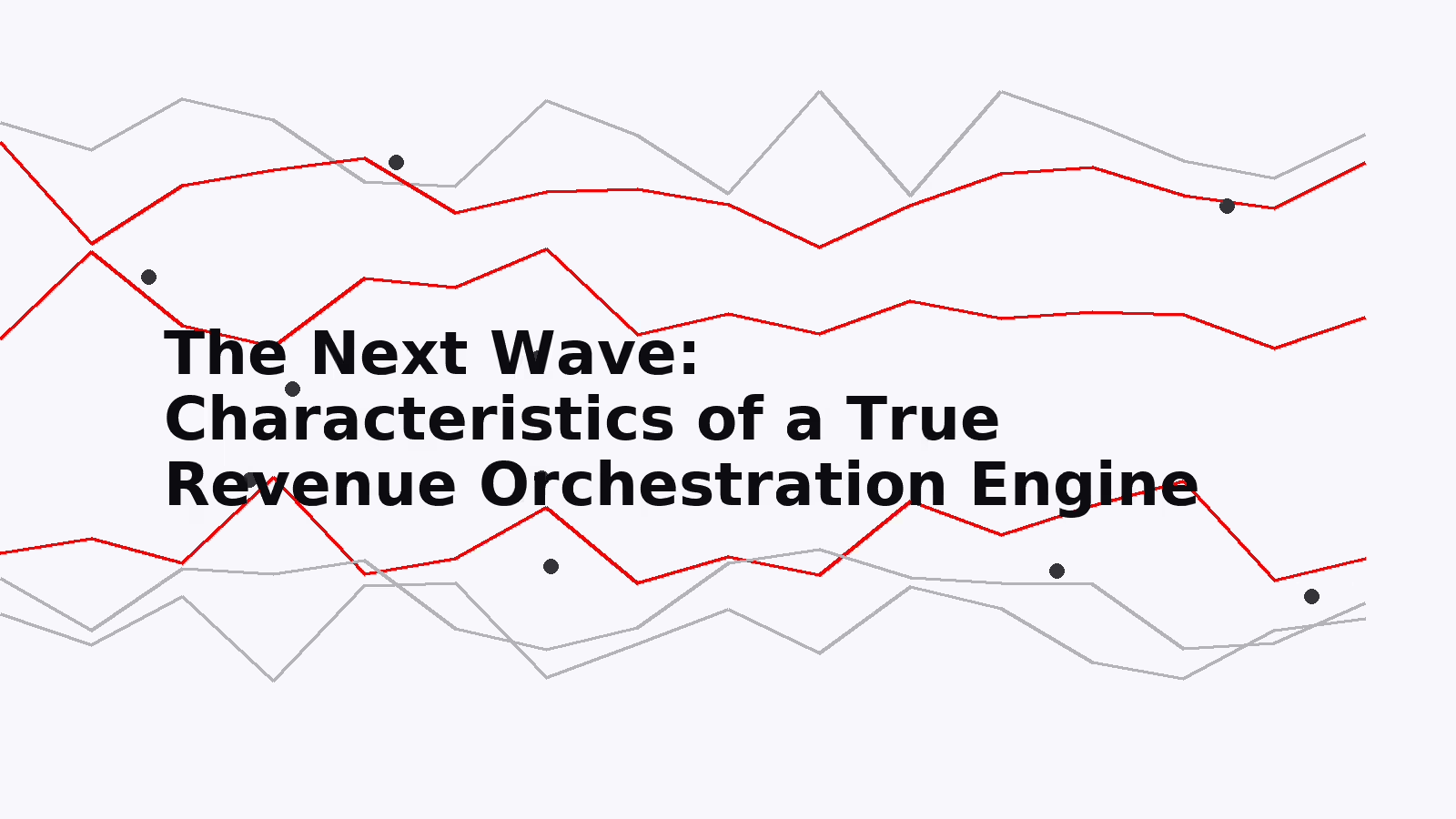
The Next Wave: Characteristics of a True Revenue Orchestration Engine
The tectonic shifts in buyer behavior, automation technology, and data strategy are converging to create a new category of RevOps tooling. This next wave moves beyond the fragmented Frankenstack to offer a truly orchestrated revenue engine. These platforms are defined by a distinct set of characteristics that directly address the shortcomings of the previous generation. They are not merely better versions of old tools; they represent a fundamentally different approach to managing the revenue lifecycle.
Characteristic 1: From Integration to True Orchestration
The most critical conceptual shift in the next wave of tooling is the evolution from simple integration to intelligent orchestration. This distinction is paramount for understanding the future of the market.
- Integration is the act of connecting systems to allow for basic data passing. It is often a one-way or batch-based process that requires significant technical setup and maintenance. Integration answers the question, “Can System A send data to System B?”.
- Orchestration, on the other hand, is the intelligent, real-time coordination of actions, data, and workflows across multiple systems, triggered by specific events and business logic. Orchestration creates a unified, dynamic process flow that spans the entire tech stack. It answers the question, “When a specific event happens in System A, what sequence of actions should be triggered across Systems B, C, and D to achieve a desired business outcome?”.
Gartner has recognized this evolution by defining a new category called “Revenue Action Orchestration” (RAO), which it describes as a unified, AI-driven solution that serves as the primary system of seller action. Platforms in this category are designed with an “orchestration-native” architecture. A prime example of this is a webhook-first design, where every significant event-such as a completed call, a received SMS, or a changed disposition-emits a real-time signal. This signal can then be used as a trigger to initiate complex workflows in other systems, such as updating a CRM, notifying a channel partner via Slack, or enrolling a contact in a new marketing sequence. This makes the tool an active, intelligent participant in an orchestrated process rather than a passive, siloed repository of data.
Characteristic 2: Embedded Execution, Not Just Insight
The first generation of RevOps tools primarily functioned as systems of insight. Business intelligence platforms, analytics dashboards, and complex reports are excellent at revealing what happened or what is happening in the business. They can identify a customer who is at risk of churning or a deal that is stalled in the pipeline. However, they require a human user to interpret this insight and then “swivel chair” to a different application to act on it. This gap between insight and action is a major source of friction and delay. The next wave of tooling is defined by its identity as a system of action. These platforms embed the execution layer directly into the workflow, collapsing the time between insight and action to zero. Instead of simply displaying a red flag on a dashboard to indicate a churn risk, a true orchestration engine will immediately and automatically trigger a series of pre-defined actions. For example, it might instantly create a high-priority task for the assigned Customer Success Manager in the CRM, add the customer to a priority call queue in an intelligent dialer, and dispatch a proactive, personalized SMS offering assistance-all without any manual intervention. This moves the function of the technology from passive reporting to active problem-solving, ensuring that critical business moments are never missed. Tools that provide the core execution layer for conversations-such as intelligent dialers and messaging platforms-are becoming essential components of this new ecosystem, acting as the hands and voice of the orchestrated strategy.
Characteristic 3: Agentic and Adaptive Workflows
Moving beyond the rigid, “if-this-then-that” logic of traditional automation, the future of RevOps workflows is agentic and adaptive. This paradigm, powered by “agentic AI,” involves the deployment of multiple, specialized, intelligent software agents that collaborate to achieve a common goal. These agents are not just automating isolated tasks; they are reasoning, coordinating, and adapting in real-time. Consider a typical lead-to-opportunity workflow in an agentic model. A “marketing agent” identifies a high-intent lead from a recent campaign. Instead of simply routing the lead to a generic queue, it intelligently hands it off to a specialized “sales agent.” This sales agent analyzes the lead’s full context-their industry, title, previous interactions, and the content they engaged with-and then autonomously crafts a hyper-personalized outreach sequence. Simultaneously, a “RevOps agent” updates the CRM with all relevant data and ensures the lead is correctly assigned, while a “customer success agent” might begin a pre-onboarding sequence by sending relevant case studies. All of this occurs in parallel, without a human needing to follow a rigid, pre-programmed checklist. The implication of this approach is a GTM motion that is incredibly adaptive, scalable, and self-optimizing. The system learns from every interaction, continuously refining its strategies based on real-time data and outcomes. This transforms static, brittle playbooks into dynamic, self-tuning revenue engines that can adjust to changing customer behavior and market conditions on the fly.
Characteristic 4: Low-Code Flexibility for the “Revenue Architect”
To design, manage, and evolve these increasingly complex, orchestrated workflows, RevOps leaders require tools that are both powerful and accessible. They cannot afford to be dependent on overburdened IT or developer resources for every minor process change or workflow adjustment. This necessity is driving the integration of low-code and no-code interfaces into the next wave of RevOps platforms. These visual, drag-and-drop environments empower non-technical users to build, test, and deploy sophisticated GTM processes, effectively democratizing the creation of revenue workflows. This technological shift enables the rise of a new, highly strategic role within the organization: the “Revenue Process Architect.” As predicted by Forrester, this senior-level, process-focused leader will become an essential member of the RevOps team. The Revenue Process Architect will use the orchestration platform as their digital canvas, designing and refining the company’s entire end-to-end revenue engine. Deep integrations with low-code automation platforms like Zapier or Make, combined with a native webhook architecture, are critical enablers of this trend. They allow the Revenue Architect to easily construct custom workflows that connect triggers from one system (e.g., “a deal stage changes in HubSpot”) to actions in another (e.g., “trigger a Kixie power-dialer session and send a notification to the deal owner in Slack”), providing a tangible example of low-code revenue process design in action. The following table summarizes the fundamental evolution of RevOps tooling, contrasting the current generation with the next wave.
| Characteristic | Gen 1.0 Approach (The Present) | Next Wave Approach (The Future) |
| Core Philosophy | System of Record (Data Storage & Insight) | System of Action (Intelligent Orchestration & Execution) |
| Data Handling | Siloed & Fragmented (Multiple Sources of Truth) | Unified & Centralized (Single Source of Truth / Unified Data Model) |
| Automation Logic | Rigid & Rule-Based (e.g., “If this, then that”) | Adaptive & Event-Driven (AI-powered agentic workflows) |
| Primary Function | Reporting & Analytics (Providing Insights) | Orchestration & Execution (Enabling & Automating Action) |
| User Experience | Swiveling between multiple disconnected tools | A unified workspace or “single pane of glass” |
| Key Enabler | Basic API Integrations & Manual Processes | AI-driven Orchestration & Low-Code Platforms |
Conclusion: From Managing Tools to Orchestrating Revenue
The era of the fragmented, inefficient Frankenstack is drawing to a close. It is being rendered obsolete by the unstoppable forces of the autonomous buyer, the rise of intelligent AI, and the absolute necessity of a unified data strategy. The future of competitive advantage belongs not to the company with the most tools in its stack, but to the one with the most intelligently orchestrated revenue engine. This shift from a tool-centric to a process-centric model is inevitable, and RevOps leaders must prepare for this new reality. To navigate this transition successfully, leaders should adopt a clear, strategic approach focused on three key actions:
- Conduct a “Frankenstack” Audit. The first step is to perform a ruthless and honest evaluation of the current technology stack. Leaders must identify and eliminate redundancies, pinpoint underutilized platforms that fail to deliver ROI, and, most importantly, map the manual processes and workarounds teams are using to bridge the gaps between disconnected systems. The ultimate goal of this audit is consolidation, simplification, and the reclamation of wasted resources.
- Prioritize a Unified Data Strategy. Before investing in the next “must-have” AI-powered tool, organizations must do the foundational work of establishing a robust data strategy. This includes defining clear data governance policies, implementing processes for data cleansing and enrichment, and investing in technology that can create a unified, single source of truth for all customer data. This is the non-negotiable prerequisite for any successful AI or orchestration initiative.
- Evaluate Technology on Orchestration Capabilities. The criteria for selecting new technology must evolve. Instead of asking, “What features does this tool have?” leaders must now ask a more sophisticated set of questions: “How does this tool participate in our end-to-end revenue process? How well does it orchestrate actions in other systems? How does it consume and contribute to our unified data model?” The value of a tool is no longer in its standalone capabilities, but in its ability to function as a seamless component of a larger, orchestrated whole.
This evolution signifies a profound change in the nature of the Revenue Operations function itself. The role is elevating from a tactical, administrative one focused on managing a collection of tools to a highly strategic, architectural one responsible for designing the entire commercial nervous system of the enterprise. The next wave of tooling will finally provide the capabilities to realize this vision. By embedding intelligent execution layers, like advanced communication platforms, into a unified and orchestrated framework, companies can at last deliver on the original, powerful promise of RevOps: a seamless, efficient, and predictable engine for sustainable growth. Sources used in the report


